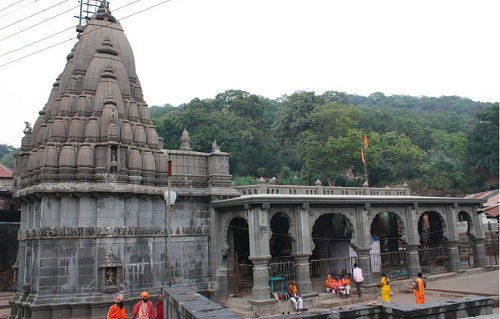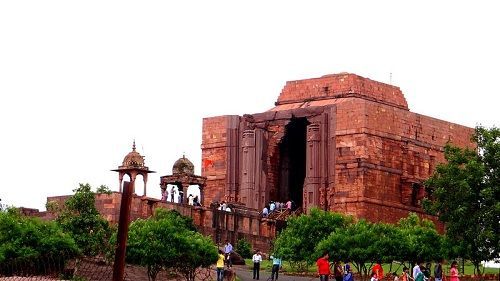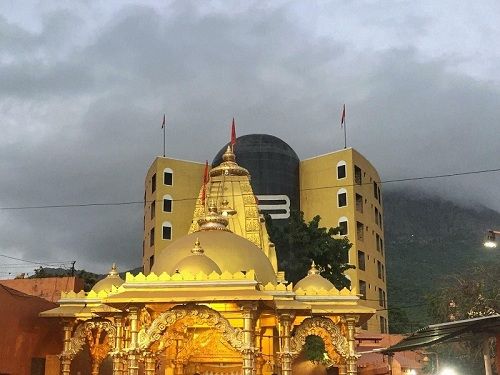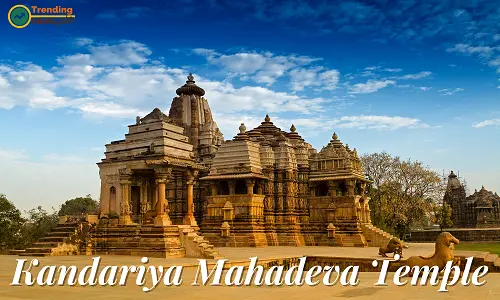SriKalahasti Shiva Temple: Andhra Pradesh’s Sacred Abode of Lord Shiva 🛕
Explore SriKalahasti Shiva Temple, a Pancha Bhoota Sthalam famous for its Rahu-Ketu puja. Plan your visit with our 2000+ word guide to rituals, festivals, and more at SriKalahasti Shiva Temple! 🙏
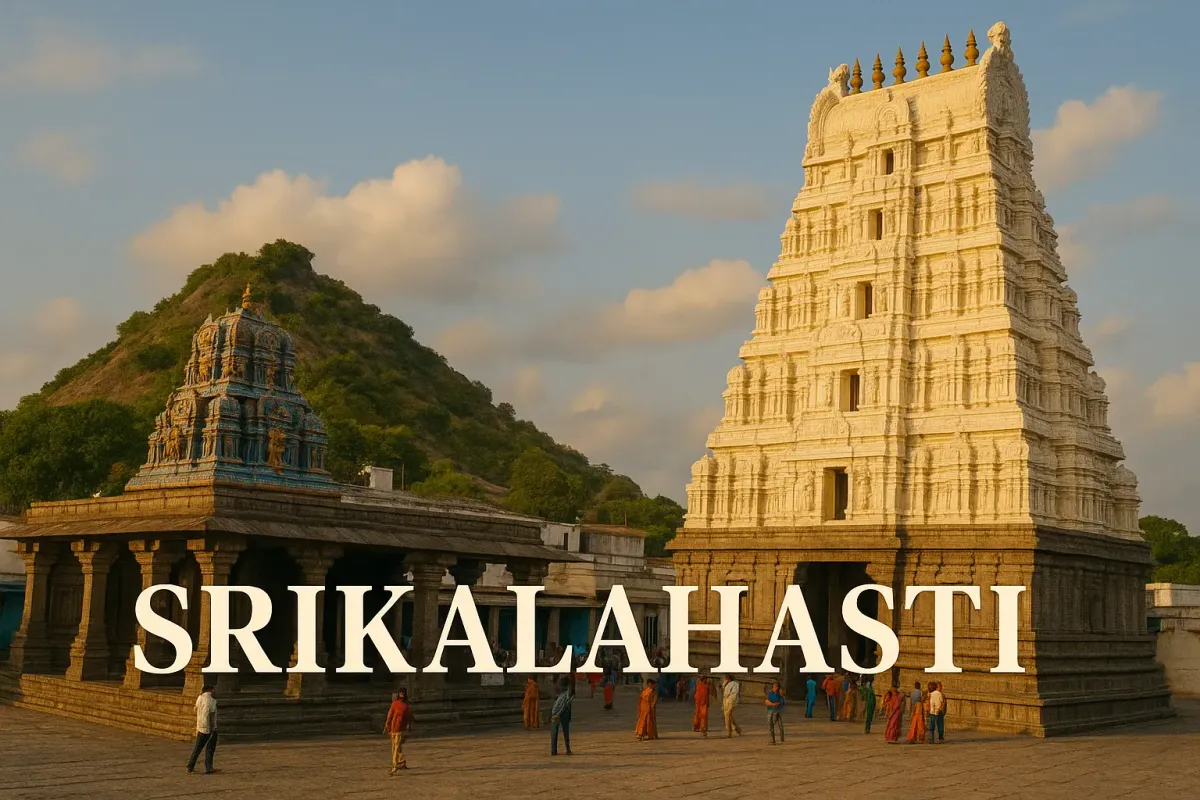
Nestled in the spiritual town of Srikalahasti, Andhra Pradesh, SriKalahasti Shiva Temple is one of India’s most revered pilgrimage sites dedicated to Lord Shiva. Known as the “Kailasa of the South” and one of the Pancha Bhoota Sthalams, this ancient temple represents the element of air (Vayu Linga). SriKalahasti Shiva Temple is famous for its architectural grandeur, spiritual significance, and the unique Rahu-Ketu puja, attracting devotees and tourists from across the globe. Set against the backdrop of the Swarnamukhi River and rolling hills, SriKalahasti Shiva Temple offers a serene yet powerful spiritual experience. This comprehensive 2000+ word guide explores the history, mythology, rituals, festivals, and nearby attractions of SriKalahasti Shiva Temple, providing all the information needed for a fulfilling visit. Whether you’re seeking divine blessings or cultural insights, SriKalahasti Shiva Temple promises an unforgettable journey. 🌿
Why Visit SriKalahasti Shiva Temple? 🌄
SriKalahasti Shiva Temple is a spiritual and cultural landmark, renowned for its association with the Pancha Bhoota Sthalams, where Lord Shiva is worshipped as the embodiment of air. The temple’s unique Rahu-Ketu puja, believed to alleviate astrological afflictions, draws thousands seeking remedies for life’s challenges. SriKalahasti Shiva Temple is also celebrated for its Dravidian architecture, intricate carvings, and historical significance, making it a must-visit for history enthusiasts. The temple’s vibrant festivals, such as Maha Shivratri, and its proximity to attractions like Tirupati Balaji Temple enhance its appeal. Whether you’re a devotee, a history buff, or a traveler exploring Andhra Pradesh, SriKalahasti Shiva Temple offers a profound experience blending spirituality, culture, and natural beauty. 🕉️
Historical and Mythological Significance of SriKalahasti Shiva Temple 📜
SriKalahasti Shiva Temple is steeped in mythology and history, with origins dating back to the 5th century CE, though its current structure was expanded during the Chola and Vijayanagara dynasties (10th-16th centuries). According to legend, the temple derives its name from three devotees of Lord Shiva: Sri (spider), Kala (snake), and Hasti (elephant). The spider wove a web to protect the Shivalinga, the snake offered gems, and the elephant bathed the linga with water. Impressed by their devotion, Shiva granted them salvation, and the temple was named SriKalahasti Shiva Temple. As a Pancha Bhoota Sthalam, it represents the air element, with the Shivalinga said to flicker even in a sealed sanctum, symbolizing the breath of life. The temple is also linked to the sage Kannappa, who offered his eyes to Shiva, earning divine blessings. This rich mythology makes SriKalahasti Shiva Temple a sacred site for devotees.
For those interested in exploring other sacred Shiva shrines, Shiva Temples In India provides a guide to powerful Shiva temples across the country.
Spiritual Significance and Rituals at SriKalahasti Shiva Temple 🪔
SriKalahasti Shiva Temple holds immense spiritual importance, particularly for its Vayu Linga, representing the air element. The Shivalinga in the sanctum is uniquely shaped, resembling a snake’s hood, and is believed to possess divine energy. The temple is renowned for the Rahu-Ketu puja, a special ritual performed to mitigate the adverse effects of the planetary nodes Rahu and Ketu, believed to influence one’s destiny. Devotees offer milk, bilva leaves, and flowers during daily pujas, including Jalabhishek and Rudrabhishek, seeking blessings for prosperity and peace. The morning and evening aarti, accompanied by Vedic chants and temple bells, create a divine ambiance at SriKalahasti Shiva Temple. The temple is a key pilgrimage site during Maha Shivratri and other festivals, drawing thousands for spiritual rituals. Learn more about such sacred celebrations in Ancient Festivals of India.
Rahu-Ketu Puja at SriKalahasti Shiva Temple 🌑
The Rahu-Ketu puja is a hallmark of SriKalahasti Shiva Temple, attracting devotees seeking astrological remedies. Performed to pacify the malefic effects of Rahu and Ketu in one’s horoscope, this ritual is believed to alleviate issues like financial troubles, marital discord, and health problems. The puja involves offerings of specific items like sesame seeds, turmeric, and flowers, conducted by temple priests at designated times (Rahu Kalam). The cost ranges from INR 500 to INR 2500, depending on the type of puja (basic or elaborate). Devotees are advised to consult priests or temple authorities for auspicious timings. The Rahu-Ketu puja’s spiritual potency makes SriKalahasti Shiva Temple a unique destination for those seeking cosmic balance.
Festivals at SriKalahasti Shiva Temple 🎉
SriKalahasti Shiva Temple comes alive during major Hindu festivals, enhancing its spiritual vibrancy:
- Maha Shivratri (February-March): The most significant festival at SriKalahasti Shiva Temple, celebrating Lord Shiva’s divine union with Parvati. Thousands gather for night-long prayers, aarti, and Rudrabhishek, with the temple adorned with lights and flowers.
- Shravan Month (July-August): A holy month for Shiva worship, with daily pujas, Jalabhishek, and Rahu-Ketu rituals, drawing devotees to SriKalahasti Shiva Temple.
- Karthika Masam (October-November): Devotees light lamps and offer prayers, creating a serene ambiance at SriKalahasti Shiva Temple.
- Navratri: Celebrated with special pujas honoring Goddess Bhaktairishala, the temple deity, complementing the Shiva-centric festivities.
These festivals offer a deep cultural and spiritual experience at SriKalahasti Shiva Temple.
Architecture and Layout of SriKalahasti Shiva Temple 🏛️
SriKalahasti Shiva Temple is a masterpiece of Dravidian architecture, characterized by its towering gopurams (temple towers) and intricate stone carvings. The main gopura, built during the Vijayanagara period, is adorned with sculptures depicting scenes from Shiva Purana. The temple complex includes the sanctum housing the Vayu Linga, smaller shrines dedicated to Goddess Gnanamba (Parvati), Ganesha, and other deities, and the mandapas (halls) for rituals and gatherings. The underground Pathala Vinayaka temple, dedicated to Lord Ganesha, is a unique feature, accessible within the complex. The temple’s white-washed walls, detailed frescoes, and the Swarnamukhi River backdrop enhance the aesthetic and spiritual charm of SriKalahasti Shiva Temple.
Activities at SriKalahasti Shiva Temple 🌳
Visitors to SriKalahasti Shiva Temple can engage in various activities:
- Spiritual Practices: Participate in pujas, perform Rahu-Ketu rituals, and meditate in the sanctum of SriKalahasti Shiva Temple.
- Rahu-Ketu Puja: Book this special ritual to address astrological concerns, guided by temple priests.
- Photography: Capture the temple’s gopurams, carvings, and surrounding hills, respecting sanctum restrictions at SriKalahasti Shiva Temple.
- Explore Architecture: Admire the Dravidian-style carvings and frescoes within the temple complex.
- Attend Festivals: Join Maha Shivratri or Shravan celebrations for a vibrant spiritual experience at SriKalahasti Shiva Temple.
These activities make SriKalahasti Shiva Temple a multifaceted destination for spiritual and cultural exploration.
Nearby Attractions to Explore from SriKalahasti Shiva Temple 🗺️
SriKalahasti Shiva Temple is well-positioned for exploring nearby attractions in Andhra Pradesh:
- Tirupati Balaji Temple: 40 km away, this world-famous temple dedicated to Lord Venkateswara is a must-visit pilgrimage site near SriKalahasti Shiva Temple.
- Gudimallam Temple: 20 km from SriKalahasti Shiva Temple, this ancient Shiva temple is known for its unique linga and historical significance.
- Kailasakona Waterfalls: 70 km away, these scenic falls offer a refreshing day trip from SriKalahasti Shiva Temple.
- Talakona Waterfalls: 90 km away, a serene spot for nature lovers exploring the region around SriKalahasti Shiva Temple.
- Chandragiri Fort: 50 km away, a historical fort with museums and sound-and-light shows, complementing a visit to SriKalahasti Shiva Temple.
These attractions enhance the appeal of SriKalahasti Shiva Temple as a base for spiritual and cultural exploration.
Practical Information for Visiting SriKalahasti Shiva Temple 🚗
How to Reach SriKalahasti Shiva Temple
SriKalahasti Shiva Temple is located in Srikalahasti, Chittoor district, Andhra Pradesh, about 40 km from Tirupati:
- By Air: Tirupati Airport (25 km) is the nearest airport. Taxis (INR 500-800) or buses (INR 50-100) take 30-45 minutes to reach SriKalahasti Shiva Temple.
- By Train: Srikalahasti Railway Station, 2 km from the temple, is well-connected to Chennai, Hyderabad, and Tirupati. Auto-rickshaws (INR 50-100) are available to the temple.
- By Bus: APSRTC buses from Tirupati (1 hour, INR 50-80), Chennai (3 hours, INR 150-250), and Hyderabad (10 hours, INR 500-800) stop near SriKalahasti Shiva Temple.
- By Road: Drive from Tirupati (40 km), Chennai (120 km), or Bangalore (250 km) via NH-16. Taxis and self-driven cars are convenient options.
Best Time to Visit
The best time to visit SriKalahasti Shiva Temple is from October to March, when the weather is pleasant (15-30°C), ideal for temple visits and sightseeing. Monsoons (June-September) bring moderate rainfall, while summers (April-June) can be hot (up to 40°C). Maha Shivratri (February-March) and Shravan (July-August) are peak times for spiritual visits to SriKalahasti Shiva Temple.
Entry and Rules
- Entry Fee: Free for all visitors to SriKalahasti Shiva Temple. Rahu-Ketu puja costs INR 500-2500, depending on the package.
- Dress Code: Wear modest clothing covering shoulders and knees. Sarees or dhotis are preferred for rituals.
- Photography: Allowed in the outer complex but prohibited inside the sanctum of SriKalahasti Shiva Temple.
- Timings: The temple is open from 6 AM to 9 PM. Rahu-Ketu puja timings vary (consult temple authorities).
Accommodation
Srikalahasti offers a range of accommodation near SriKalahasti Shiva Temple:
- Hotel KSR Grand: A mid-range hotel 1 km from SriKalahasti Shiva Temple, offering comfortable rooms.
- Hotel MGM Grand: A budget-friendly option with basic amenities, ideal for pilgrims.
- Sri Sai Teja Residency: Affordable lodging 500 meters from SriKalahasti Shiva Temple, perfect for short stays.
- Tirupati Hotels: 40 km away, luxury options like Fortune Select Grand Ridge for those combining a visit to SriKalahasti Shiva Temple.
Safety and Facilities
SriKalahasti Shiva Temple is safe, with security personnel and crowd management during festivals. Facilities include restrooms, drinking water, and parking. Medical facilities are available in Srikalahasti, with larger hospitals in Tirupati (40 km). Respect temple rituals and avoid touching sacred objects.
Dining Near SriKalahasti Shiva Temple 🍽️
Dining options near SriKalahasti Shiva Temple cater to various tastes:
- Saravana Bhavan: A popular restaurant 1 km from SriKalahasti Shiva Temple, serving South Indian delicacies like dosas and idlis.
- Hotel Sindhuri Park: Offers Andhra-style thalis and North Indian dishes, located 2 km from SriKalahasti Shiva Temple.
- Local Eateries: Near the temple, stalls serve snacks like vada, pongal, and filter coffee, ideal for quick bites.
- Temple Prasad: During festivals, SriKalahasti Shiva Temple offers prasad like laddoos and pulihora, adding a spiritual touch.
Pack snacks for day trips to nearby attractions, as dining options may be limited outside Srikalahasti.
Tips for a Memorable Visit to SriKalahasti Shiva Temple 🧳
- Book Rahu-Ketu Puja: Schedule the puja in advance, especially during peak times, and confirm Rahu Kalam timings at SriKalahasti Shiva Temple.
- Visit Early: Arrive in the morning for a peaceful experience and to catch the morning aarti at SriKalahasti Shiva Temple.
- Combine with Tirupati: Plan a day trip to Tirupati Balaji Temple, 40 km away, to maximize your spiritual journey from SriKalahasti Shiva Temple.
- Respect Rituals: Dress modestly, follow priest instructions during pujas, and maintain silence in the sanctum.
- Capture the Scenery: Photograph the temple’s gopurams and Swarnamukhi River views, respecting sanctum restrictions at SriKalahasti Shiva Temple.
Conclusion 🌿
SriKalahasti Shiva Temple is a spiritual and cultural gem, offering a profound experience for devotees, history enthusiasts, and travelers. From its sacred Vayu Linga and unique Rahu-Ketu puja to its stunning Dravidian architecture and vibrant festivals, SriKalahasti Shiva Temple embodies the essence of Hindu devotion. Its proximity to attractions like Tirupati Balaji Temple and Kailasakona Waterfalls makes it an ideal base for exploring Andhra Pradesh. Whether you’re seeking astrological remedies, divine blessings, or cultural insights, SriKalahasti Shiva Temple delivers memories that will last a lifetime. Pack your devotion, embrace the spiritual vibe, and let SriKalahasti Shiva Temple guide you to a transformative journey! 🕉️

